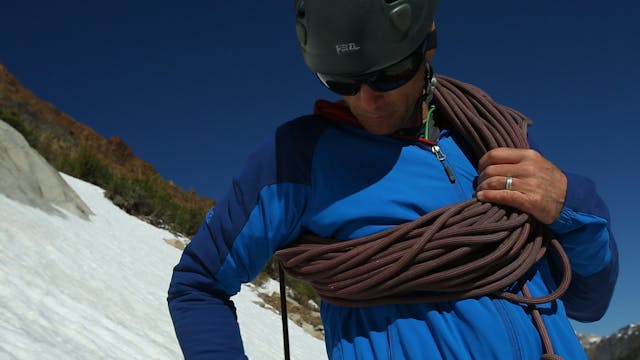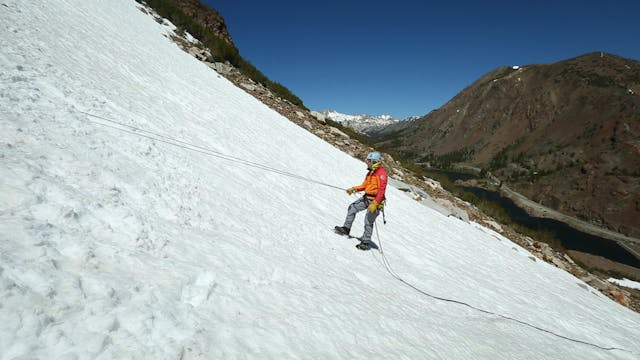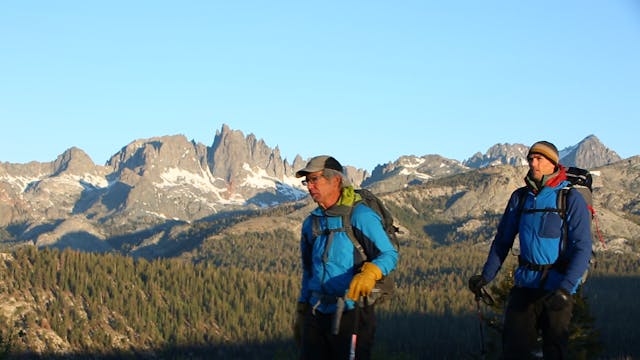Alpine: 26. Team Rope and Travel Considerations
Alpine & Mountaineering
•
1m 47s
In this video we consider multiple rope travel scenarios in the mountains. There are several things to think about when making the decision to rope up.
If the terrain is not glaciated, then there are times when many alpine climbers will move without a rope.
A rope can add security on moderate snow, if one climber is more experienced, and can arrest a fall. Also, a novice climber’s security can be increased by climbing together with a stronger climber. This method is used quite often in a guiding context, with a shortened section of rope. This short roping technique is an advanced skill, which takes lots of training and practice, and is beyond the scope of this video.
Moving one at a time, or climbing in pitches, may be appropriate on steep snow. This is similar to climbing a pitch of rock. Simul climbing, or using a “running belay,” may also be familiar. This is where climbers walk together on a rope while placing pickets or clipping protection and running the rope through it. Running belays can be a very fast way to make progress, but involve a little more risk because if one climber falls, the other will likely be pulled off their feet. It is therefore a nice way to protect climbers on lower angle snow, or on terrain that is easy for both climbers.
Often times the best method is to use a combination of shortening the rope and moving together for easier terrain, and then stopping to pitch it out and properly belay on the more difficult sections.
The decision of whether to increase the security tends to be based on 2 factors:
1. Likelihood of a fall
2. Consequences of a fall
If either of these factors increase, then the security measures provided by the rope should also increase.
We hope you found this video helpful. Feel free to comment below with questions or thoughts!
Please remember, climbing is inherently dangerous. Climb at your own risk.
Up Next in Alpine & Mountaineering
-
Alpine: 27. The Kiwi Coil
The kiwi coil allows you to adjust the amount of rope between you and your partner.
Many beginner or novice alpine climbers make the mistake of traveling with too much rope out. This mistake can cost you considerable time managing ropes, as well as decreased communication. The other negative a...
-
Alpine: 28. Rappelling with Crampons ...
In this video we discuss rappelling with crampons and ice tools.
- When rappelling with crampons and ice tools, make sure your feet are out in front of you and your ice tools are out of the way to avoid getting tangled with the rope.
- Try to make precise and deliberate steps to avoid the ...
-
Alpine: 29. Light & Fast Gear Conside...
In this video we sort through our light and fast gear for alpine climbs and mountaineering. The theme throughout our alpine segment has been speed and safety, through being light and fast.
Below are examples of gear you may consider (depending on the objective) that are both light and fast as...


